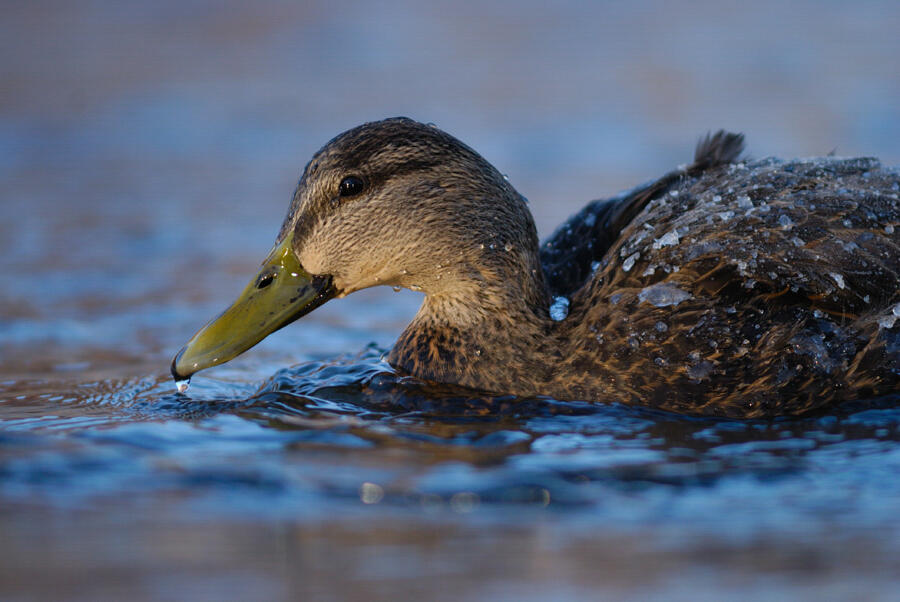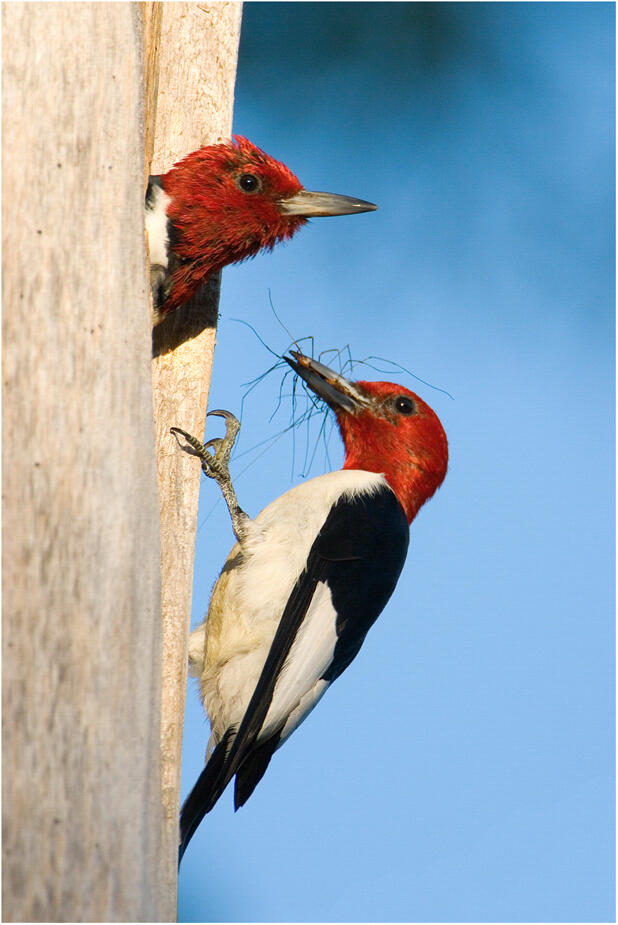The wildlife refuges of eastern North Carolina are home to huge numbers of migrating waterfowl each winter, but the flocks of Tundra Swans—and the groups of birdwatchers, hunters, and tourists that follow them—could be far smaller in the coming decades.
That’s just one North Carolina-specific finding from a new Audubon report on climate impacts across the National Wildlife Refuge System. The report shows that unchecked rising temperatures threaten to degrade the habitat conditions that birds need to thrive in North Carolina’s wildlife refuges, from Mattamuskeet on the coast to Mountain Bog Wildlife Refuge in western North Carolina.
“Our national refuge system should do exactly what its name suggests: provide a safe haven for birds and other wildlife. But even these strongholds aren't immune to rising temperatures,” said Curtis Smalling, Director of Conservation at Audubon North Carolina. “As habitat and climate conditions change, so will the bird populations that depend on these places, and not all of them will be able to adapt or find new habitat elsewhere.”
The findings show that changes in our climate are accelerating habitat changes at rates that may not be sustainable, so birds that move out of one region may not be able to find the resources they need elsewhere. The result will be a refuge system that looks very different than it currently does, as emblematic species of some regions shift.
Report Highlights for North Carolina
 American Black Duck. Photo: Glenn Upton/Audubon Photography Awards
American Black Duck. Photo: Glenn Upton/Audubon Photography Awards
Waterfowl: Watching an endless ribbon of Tundra Swans fly across the horizon is a quintessential experience of eastern North Carolina in winter. But the flocks might not be as large, or present at all, in the future. Tundra Swans and other iconic species like American Black Ducks are projected to see winter habitat and climate conditions decline substantially in many of North Carolina’s coastal refuges. In some places, conditions are expected to worsen to the point that these species would be extirpated.
Gone Completely: Several wintering species could be completely gone from eastern North Carolina’s refuges in the coming decades, including Bald Eagles, Gray Catbirds, Northern Flickers, and all three nuthatch species—Brown-headed, Red-breasted, and White-breasted.
Warbler Stronghold: Alligator River National Wildlife Refuge is a global stronghold for breeding Prairie Warblers, a bright yellow songbird that nests in overgrown fields. But according to the report, the Prairie Warbler could be pushed out of the refuge by the 2050s because of changing habitat and climate conditions. Two of the biggest threats are heavier rain and spring heat waves, both of which endanger young birds in the nest, according to Audubon's Survival by Degrees report.
 Red-headed Woodpecker. Photo: Patrick Dennen/Audubon Photography Awards
Red-headed Woodpecker. Photo: Patrick Dennen/Audubon Photography Awards
Woodpecker Extirpation: Pee Dee National Wildlife Refuge, located 60 miles east of Charlotte, is a global stronghold for the Red-headed Woodpecker, a species already severely threatened by climate change. According to the report’s projections, breeding Red-headed Woodpeckers could be pushed out of the refuge by the 2050s because of climate impacts. The Scarlet Tanager, a beautiful, crimson-red songbird of interior forests, is facing a similar future at Pee Dee. For both species, the specific climate threats they face include the urbanization of habitat, more wildfires, and spring heatwaves that threaten hatchlings.
New Colonization: But it’s not bad news for all bird species. Some species are expected to move northward and colonize new territories in North Carolina’s refuges, including Swallow-tailed Kites, Purple Gallinules, and Painted Buntings.
More on the Report
Across the country, the National Wildlife Refuge System spans 95 million acres on land and also covers 760 million submerged lands and waters. In North Carolina, there are 11 refuges, many of them protecting unique and important habitat in the northeastern part of the state.
Explore the findings for specific refuges, including all 11 in North Carolina, here. The briefs detail what specific climate threats are affecting each refuge, what species will be climate-vulnerable, and how precipitation and temperature may change in the next 30 years absent any preventive action.
The findings of the study have already affected how refuge biologists approach their work, prompting them to adopt a method known as Resist-Affect-Direct, or RAD.
“For years, the standard for refuge biologists has been to assume that the conditions in their region would stay the same, and they specialized their work to those climates. But now they have shifted to the adaptive Resist-Affect-Direct approach, anticipating how to weather some changes that may be inevitable, while trying to prevent the worst effects of climate change,” said Brooke Bateman, director of climate science at the National Audubon Society.
Audubon is working with decision-makers and land managers to ensure the National Wildlife Refuge System has adequate funding, and to expand the System to meet the needs of birds and people as they adapt to a changing climate. The FWS is also using the data to support expansion and acquisition for the refuge system.
Media Contact: Ben Graham, ben.graham@audubon.org
About Audubon North Carolina
Audubon North Carolina, a state program of the National Audubon Society, has offices in Durham, Boone, Corolla, and Wilmington. Learn more at www.nc.audubon.org and on Twitter, Facebook, and Instagram. The National Audubon Society protects birds and the places they need, today and tomorrow. A nonprofit conservation organization since 1905, Audubon works throughout the Americas using science, advocacy, education, and on-the-ground conservation. Learn more at www.audubon.org and on Facebook, Twitter and Instagram @audubonsociety.